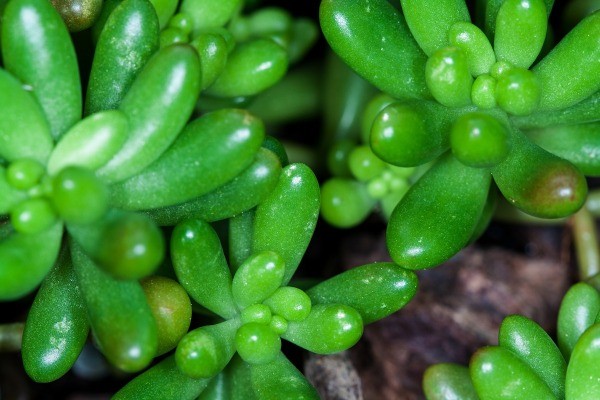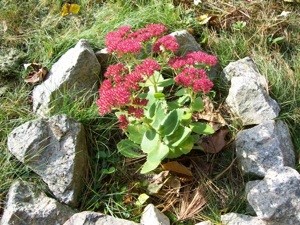
| Botanical Name: | Sedum |
| Life Cycle: | perennial |
| Planting Time: | spring, summer or fall |
| Height: | 2" to 30" |
| Exposure: | full sun |
| Soil: | average to rich, well-drained soil |
| Hardiness: | zones 3-9 depending on variety |
| Bloom Time: | summer to fall |
| Flower: | variety of colorful star-shaped flowers |
| Foliage: | fleshy semi-green to evergreen leaves in a variety of shapes, sizes and colors |
| Propagation: | division in spring or fall; cuttings any time plants are not flowering |
| Suggested Use: | groundcovers, rock gardens, edgings, borders, beds, hanging baskets and fillers |
| Growing Hints: | Sedums come in a variety of types-from groundcovers to tall standing mounds. Start with one or two purchased plants and plan on propagating additional plants by division and cuttings. Sedums dislike wet feet so root cuttings in a well-drained medium of 50-50 vermiculite and perlite. Creeping varieties do not need to be rooted. Simply pull off a piece and pat it down in the soil where you want it to grow. Low-growing types spread quickly and make excellent ground covers. |
| Interesting Facts: | Sedums also grow well as houseplants as long as they get 4 or more hours per day of direct sunlight or 12 to 16 hours of strong artificial light. |
Here are the questions asked by community members. Read on to see the answers provided by the ThriftyFun community.

It is red sedem. It will grow all summer then turn red for the fall.
Thank you both very much for your help in identifying my plant.And the name does suit it well.
Please be aware that the bumblebees absolutely LOVE this plant. I pulled it out because there were too many around children.
This is a perrennial sedum. It will become fuller over the years and is trouble free and beautiful.
As the one poster said, it is a red sedum not necessarily "Autumn Joy". That is just one name among many for Sedum.
I love this plant - transplanting is a snap! Trim back the tops to get a fuller plant and take that part and poke a hole and stick in the ground. And yes, watch for the bees! If this is planted in a shady area the flower is more lavender.
It's a sedum or as my Mom calls them "Forevers". You might know it as that.
It is a cold tolerant sedum. One of the many plants with the common name of roseroot. they provide color late in the fall.
They also naturalize very well. You can take a small piece of the bulbous reddish roots/tubers and easily grow many more plants. Even taking large chunks of the roots have not hurt my plants.
I've never had a problem with insects or bees/wasps with them.
I so appreciate all the help given to me and thanks to all the people who responded.
Sedum
Check out these photos.
It sure is nice to have fall bloomers in the garden. I live in a colder zone and our summers are short. Having flowers that bloom in the fall helps to extend the season!
What is this? It is loaded with flies and butterflies constantly, and I mean loaded! Thanks.